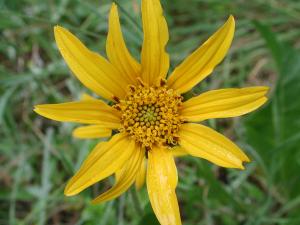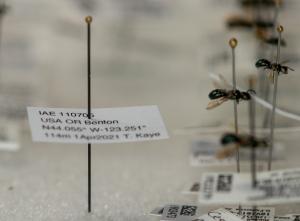Biologists discover invisible pollinator
CORVALLIS, OR. Biologists at the Institute for Applied Ecology today announced the discovery of a bizarre and completely transparent insect believed to play a significant role in the pollination of grassland plants.

Publishing in the journal Anoitos the scientists explain that the insect was encountered during a larger study of pollinators in prairies of western Oregon and Washington State.
Dubbed stealth bees, the insects were discovered in 2019 but their publication was delayed because the specimens were inexplicably lost that year, and again after recollection in 2020. So in 2021 when new specimens were encountered the researchers immediately took detailed photographs and preserved them to document the find.
Because these bees appear to be so unique they have been placed into their own family of bees, the Invisibilidae, and officially named Invisibilia aoratos.
“These incredibly beautiful bees are a bit hard to describe because, well, you can’t really see them in normal light,” said lead author Dr. Leo Constantine. “Or in any light, really,” he added.

Very little is yet known about the bee’s life history or nesting requirements. The researchers are uncertain about how widely distributed these elusive creatures are, or if it is possible they are living among us without our knowledge. Which is creepy to think about.
“We’ve only been able to collect them from a few flowering plants so far, and we suspect that these bees are preferentially visiting translucent plants, which we also can’t see, but are convinced are there anyway,” said Constantine.
The biologists plan to collect more stealth bees in 2022 and hope to discover additional new species.
Dr. D. Thomas from Oregon State University, who was not associated with the study, expressed skepticism that the stealth bees are real. “I’m not convinced that the authors of this research publication are being fully transparent,” Thomas said. “Although I agree that when it comes to these invisible creatures they have documented, it is clear they are seeing things.”
We hope you enjoyed reading this April Fool’s Day spoof.